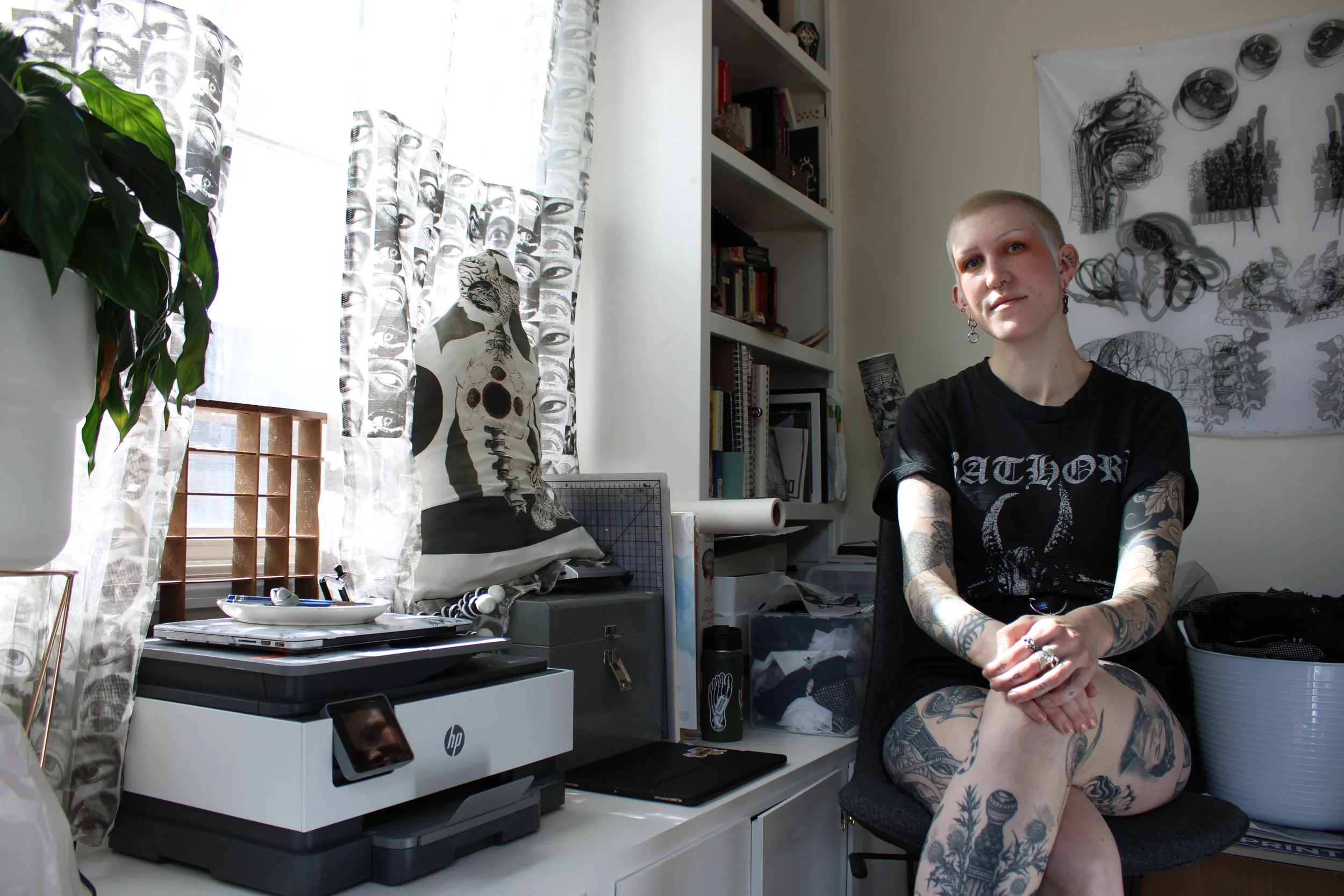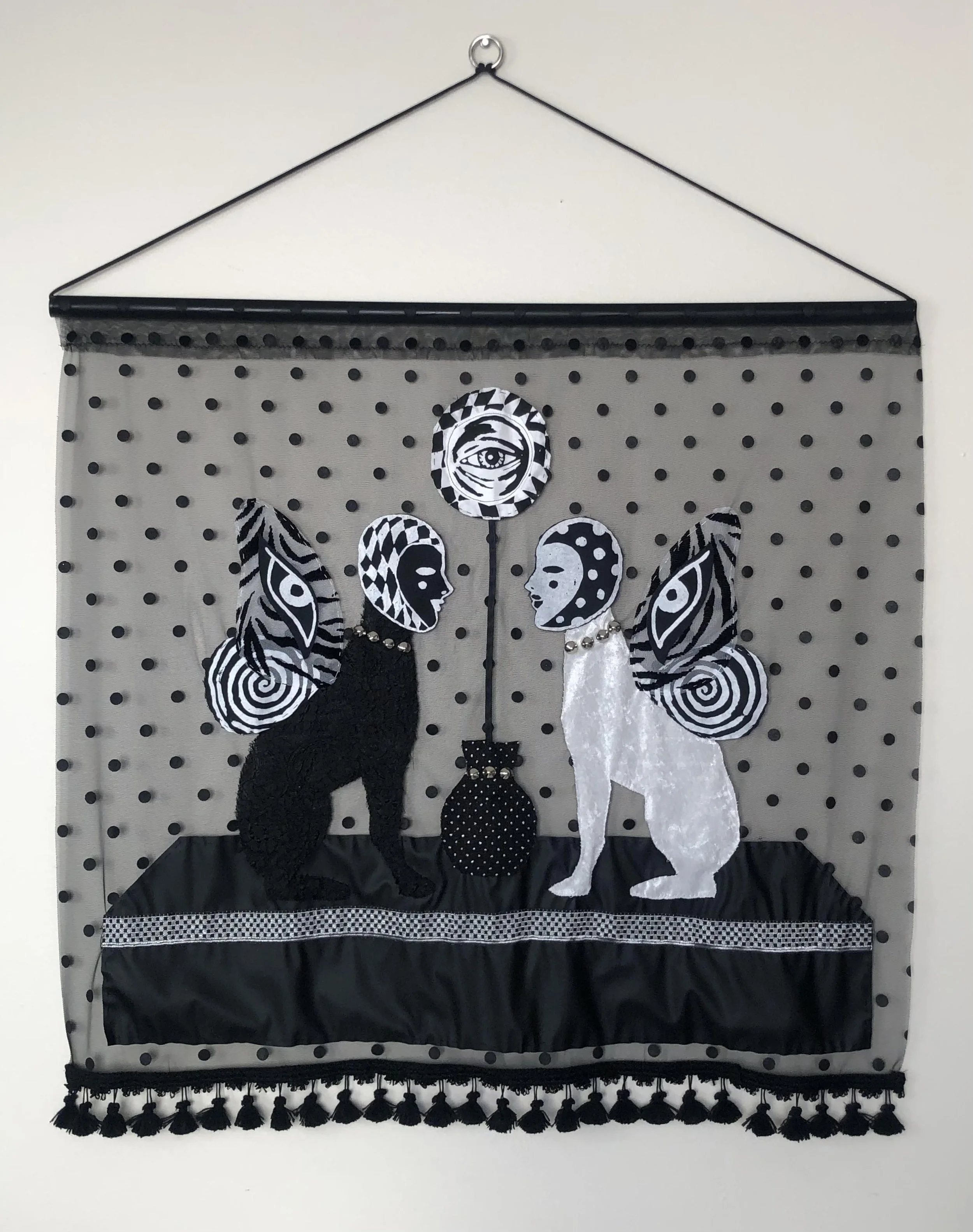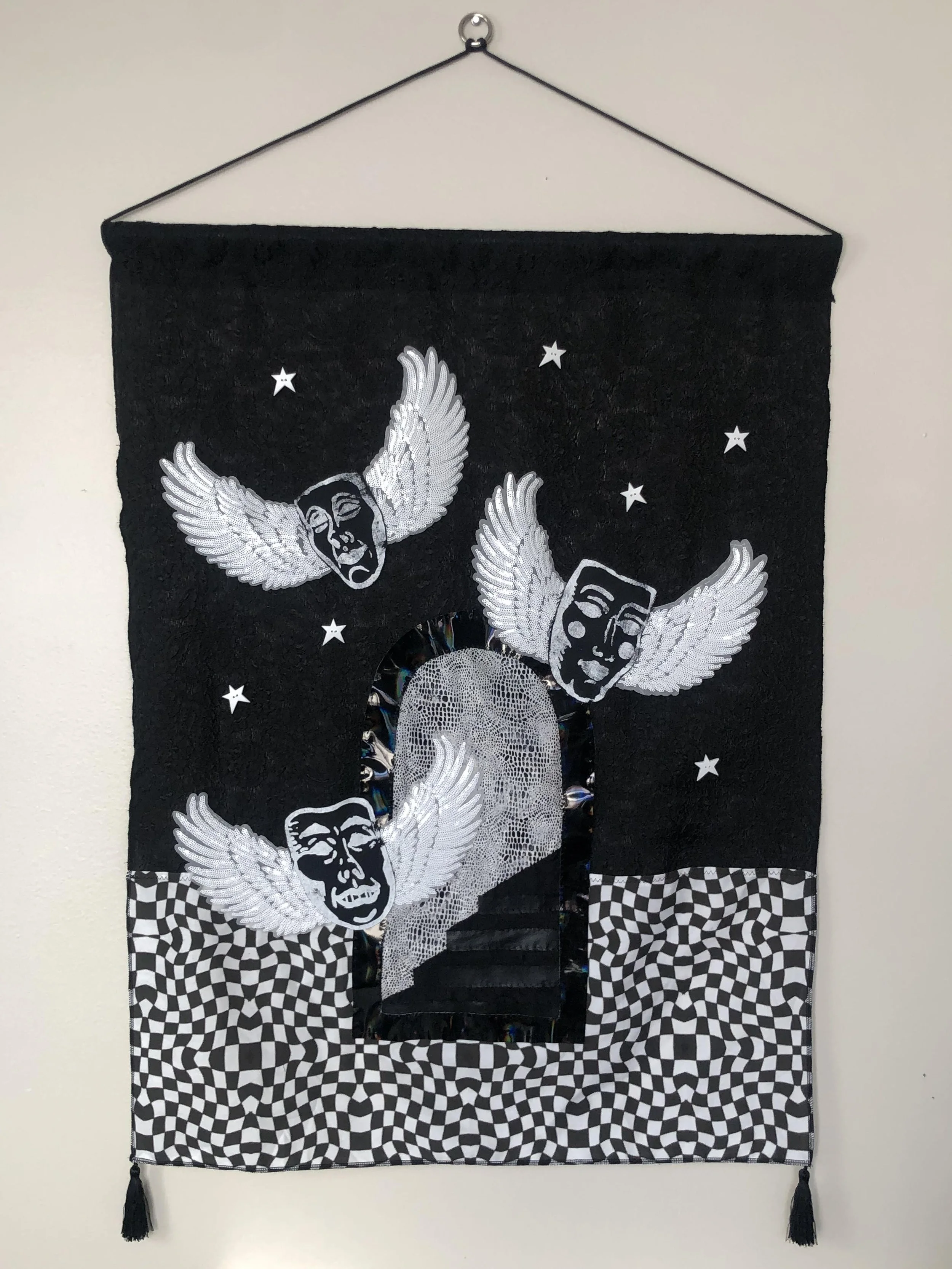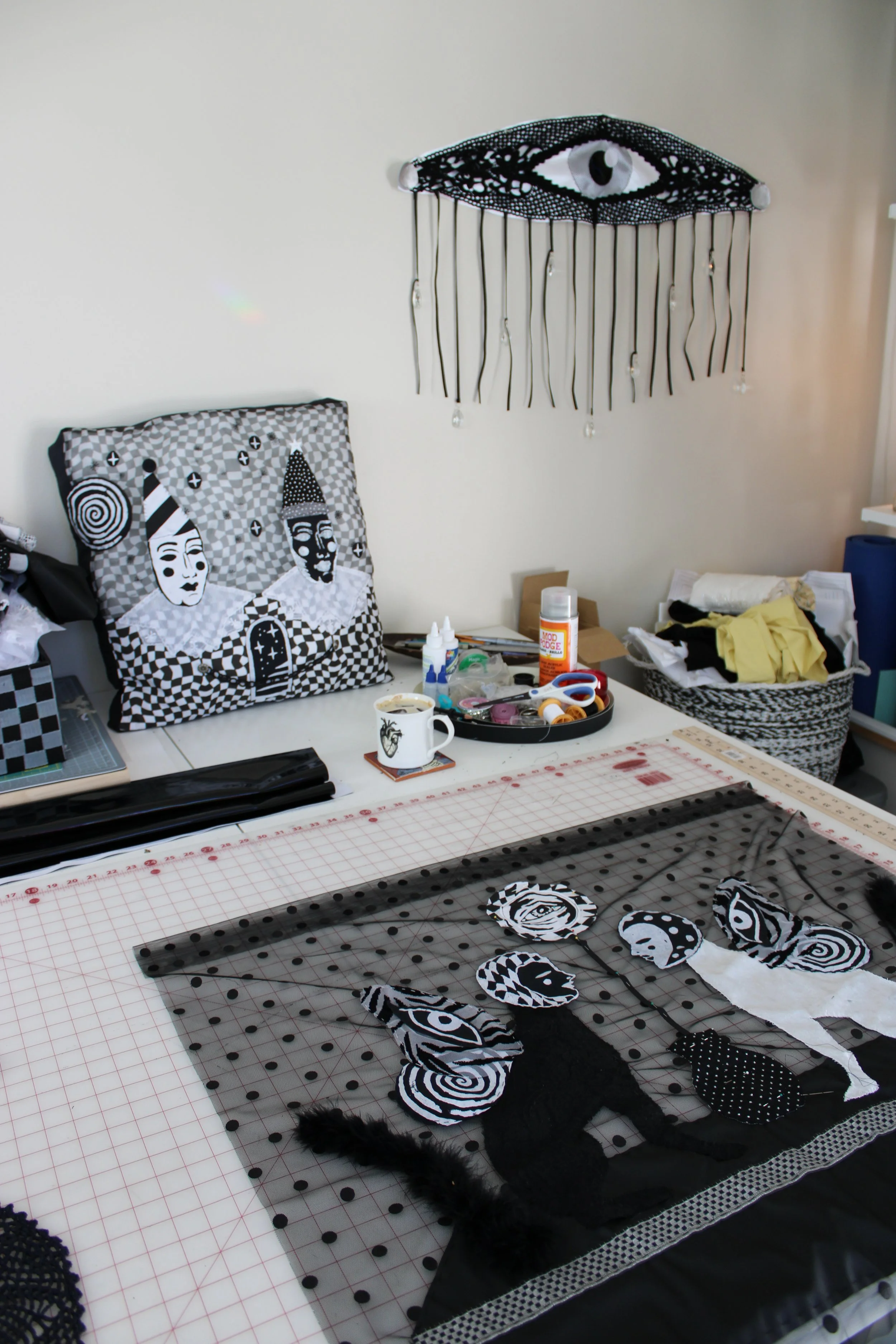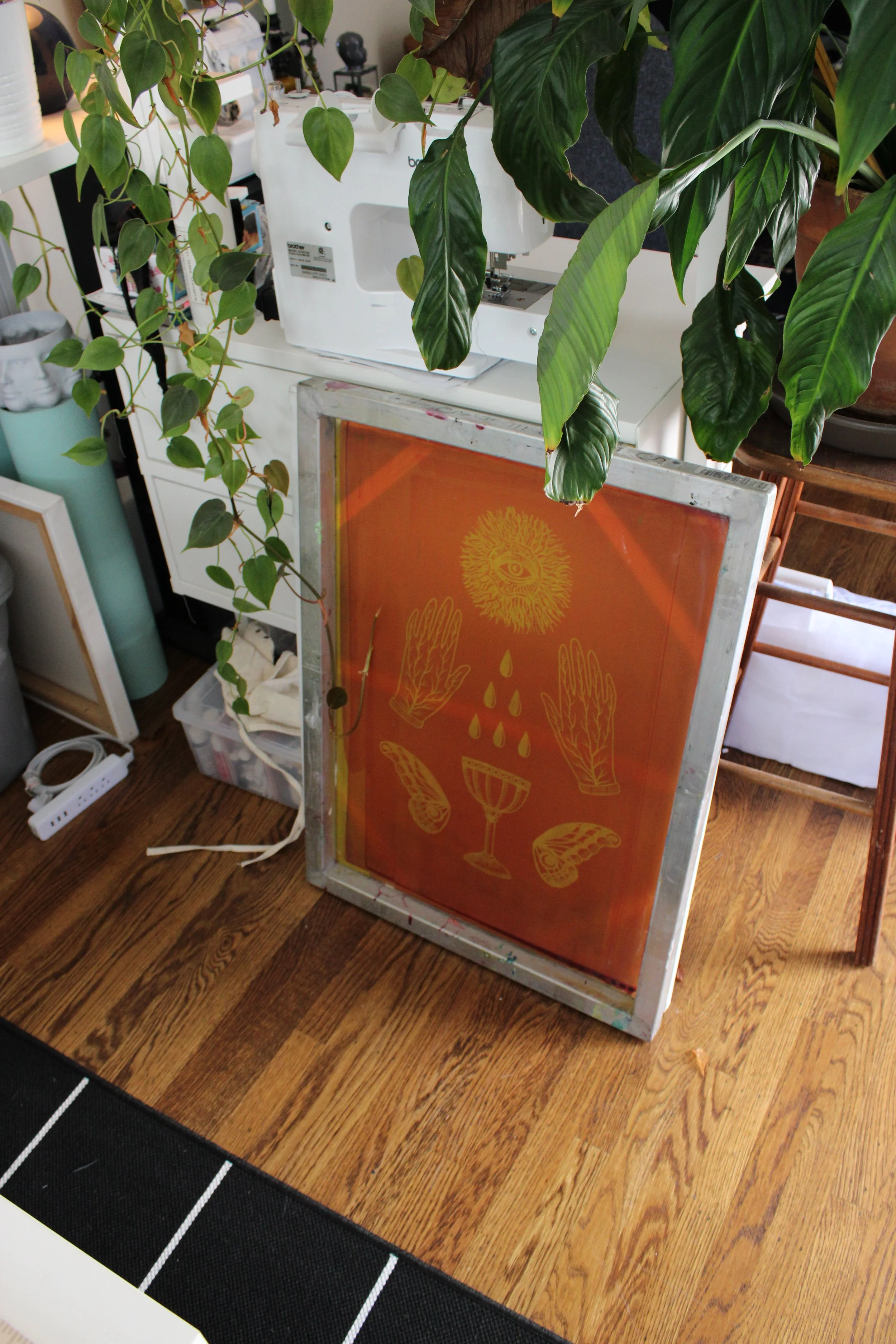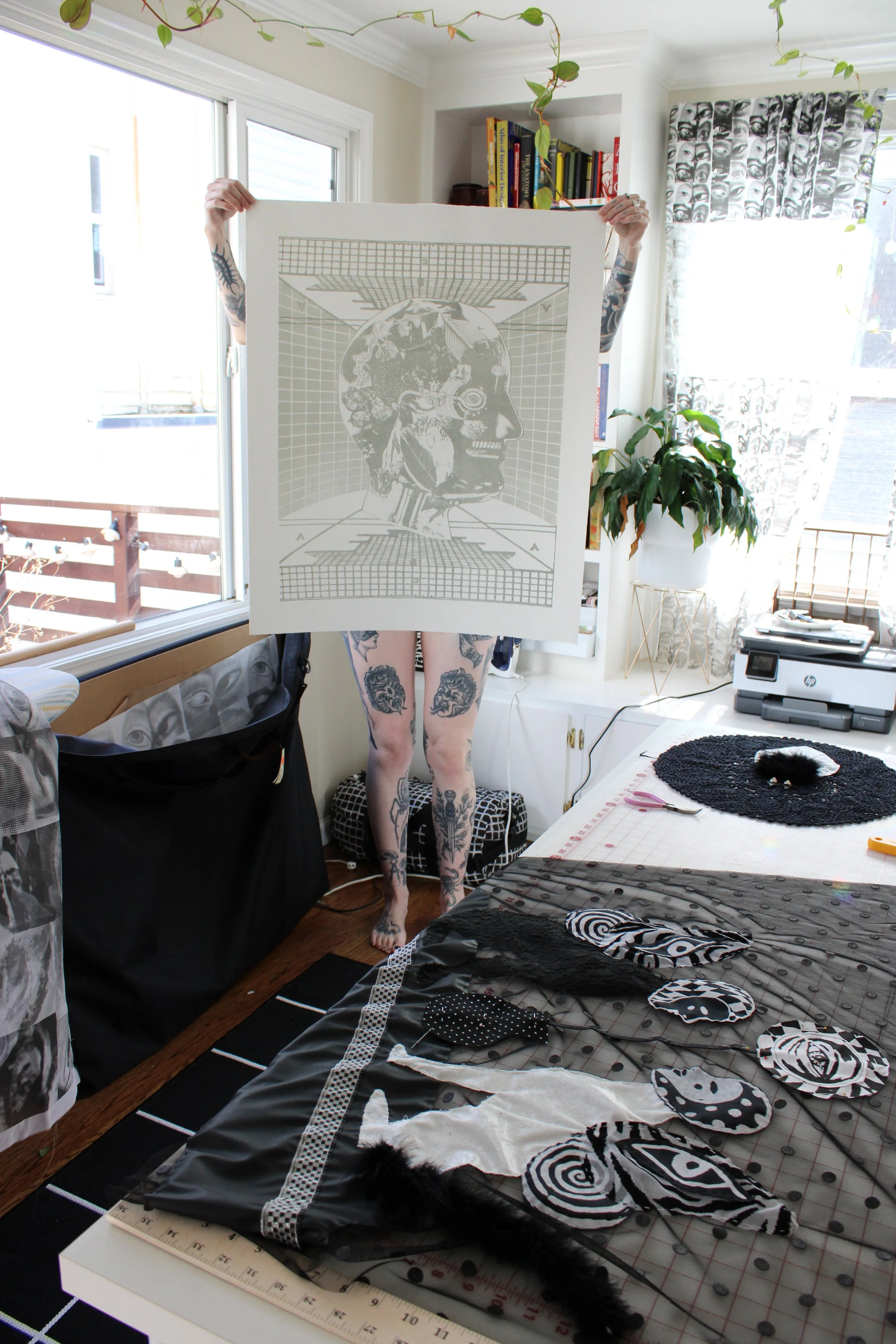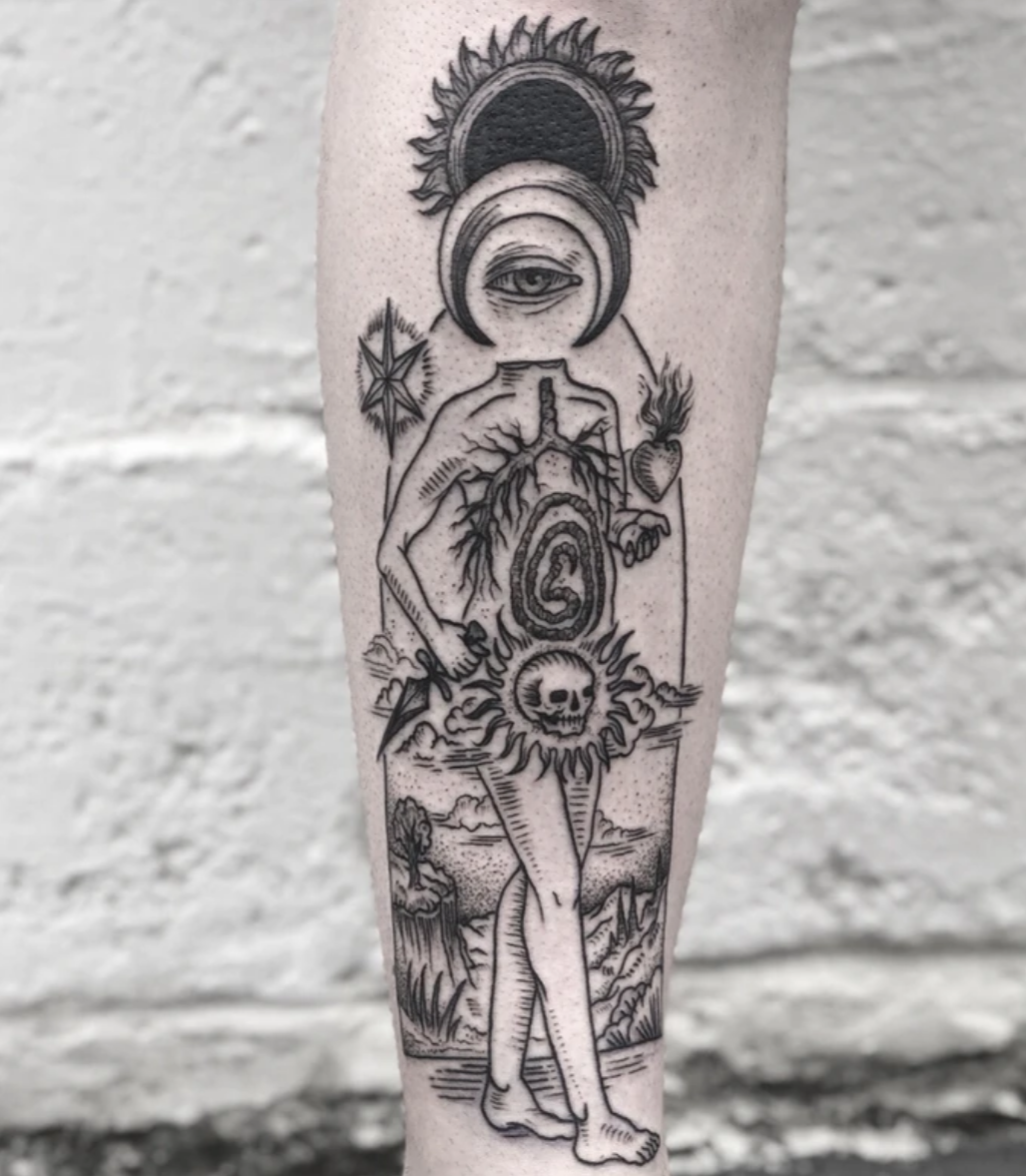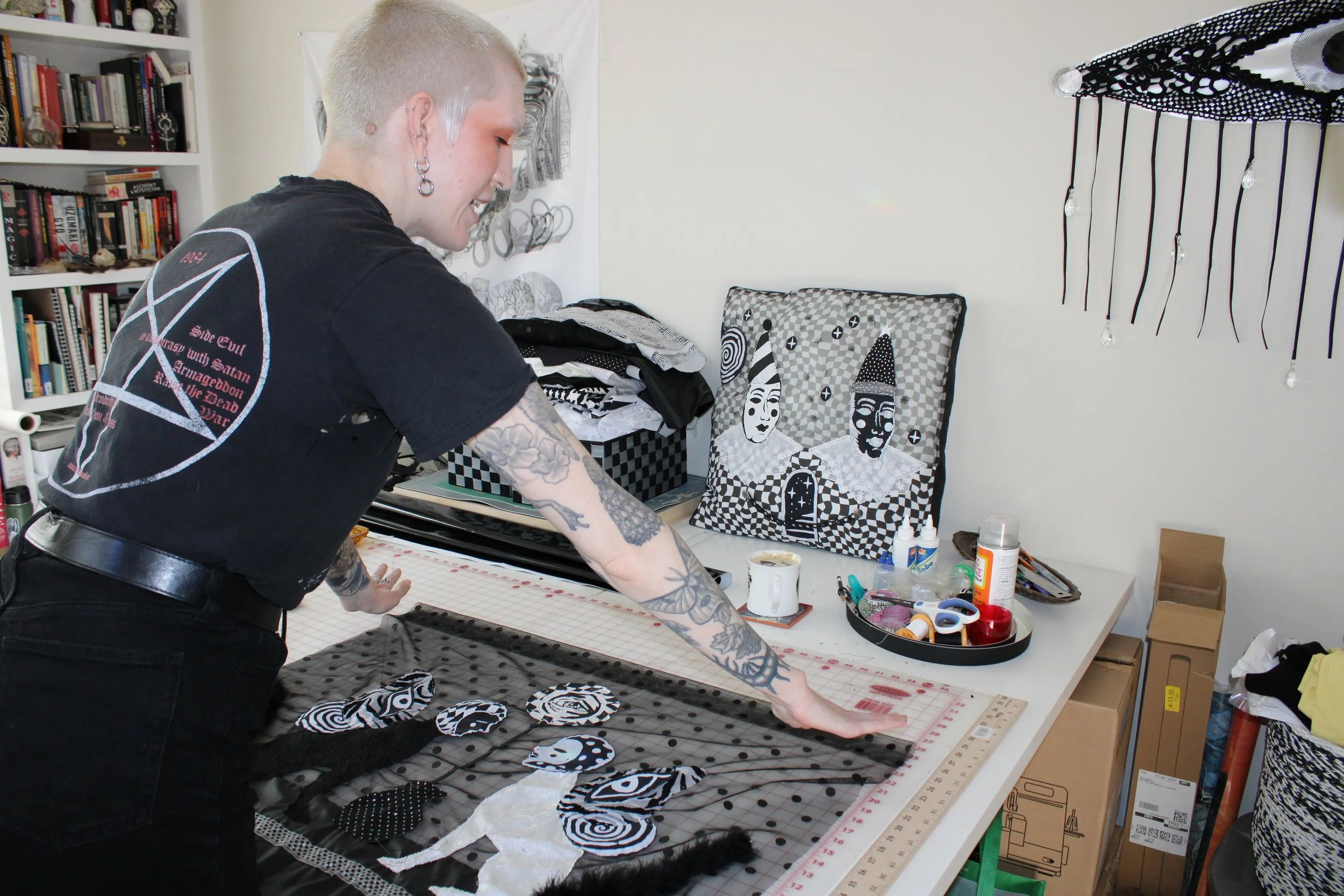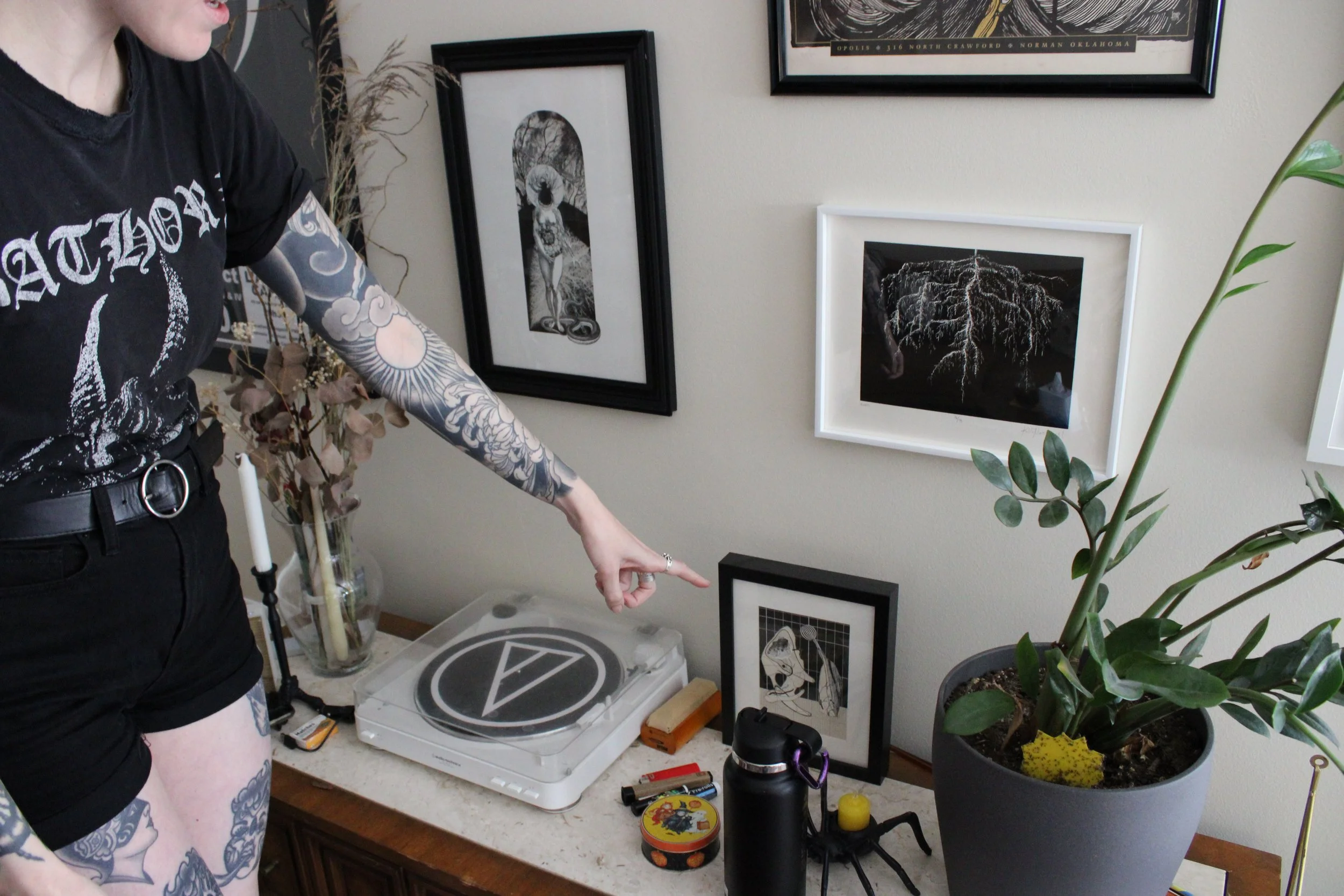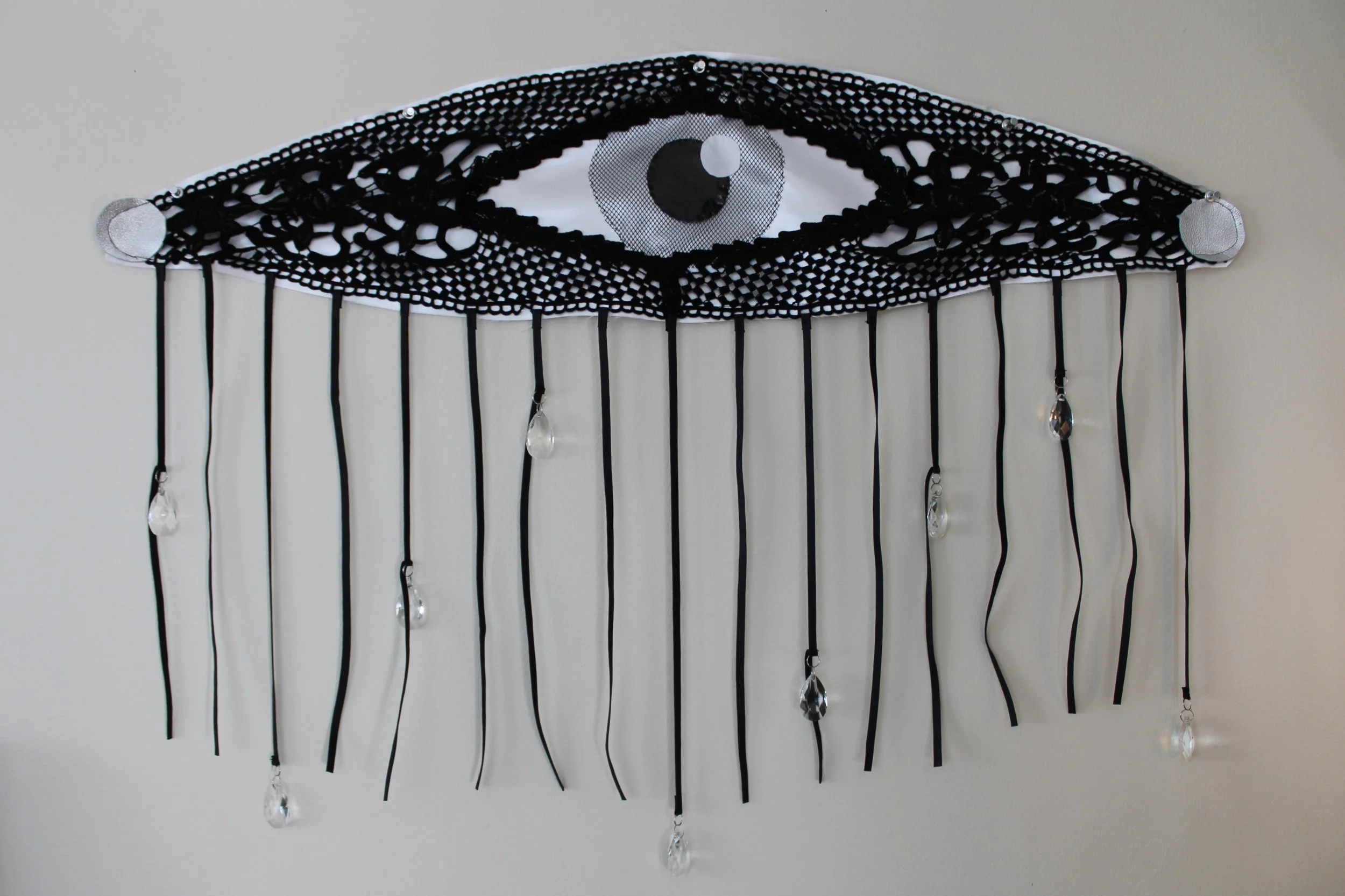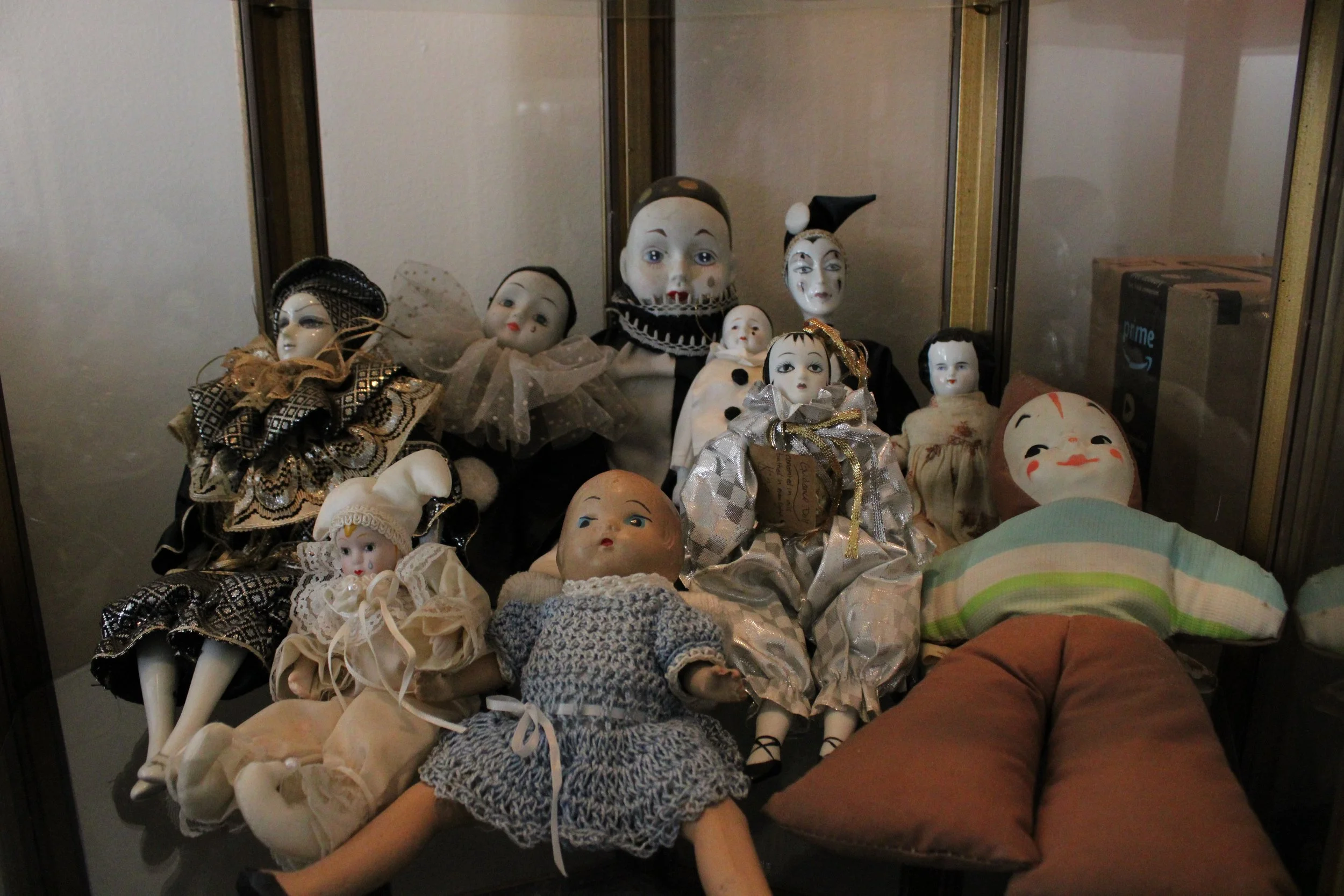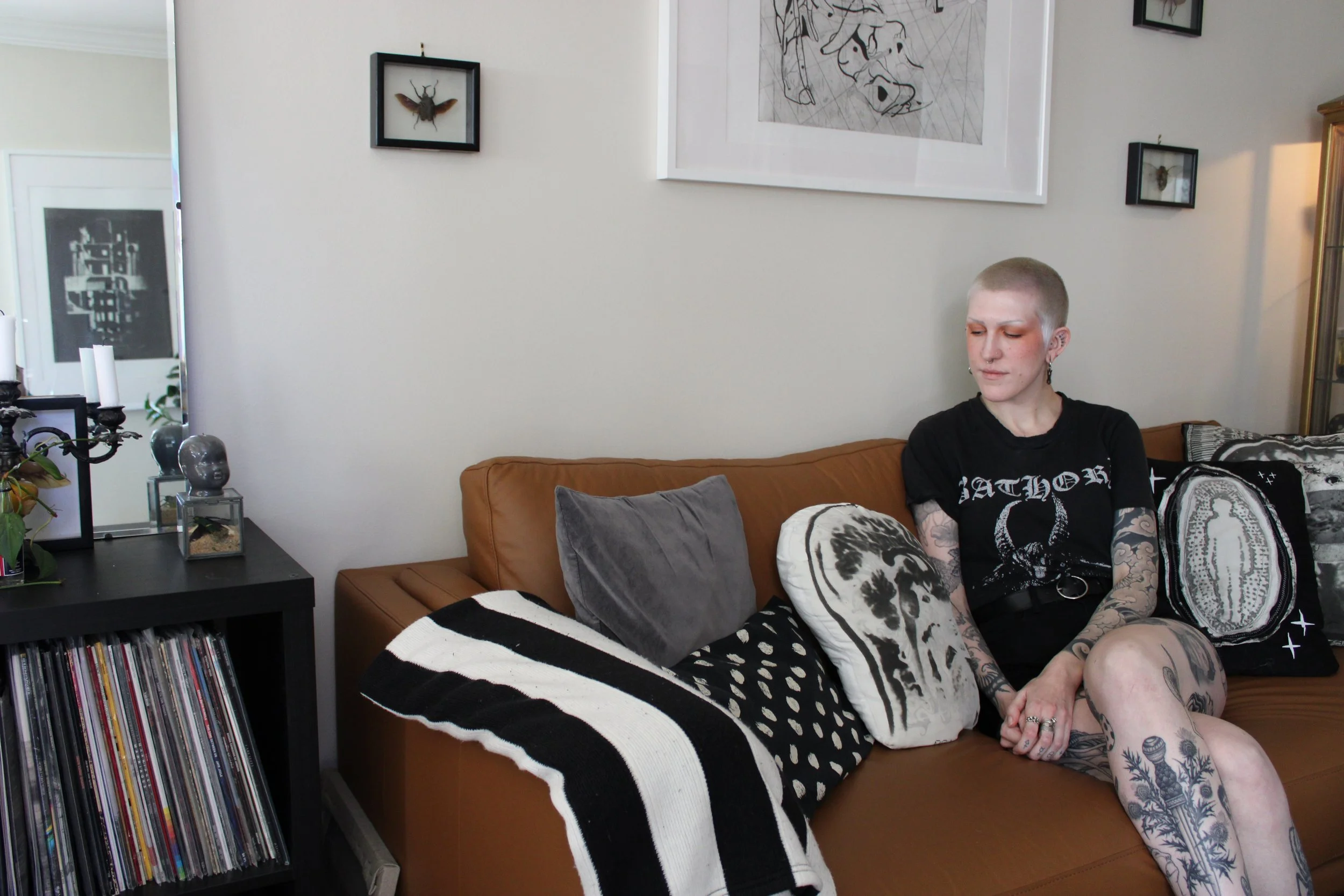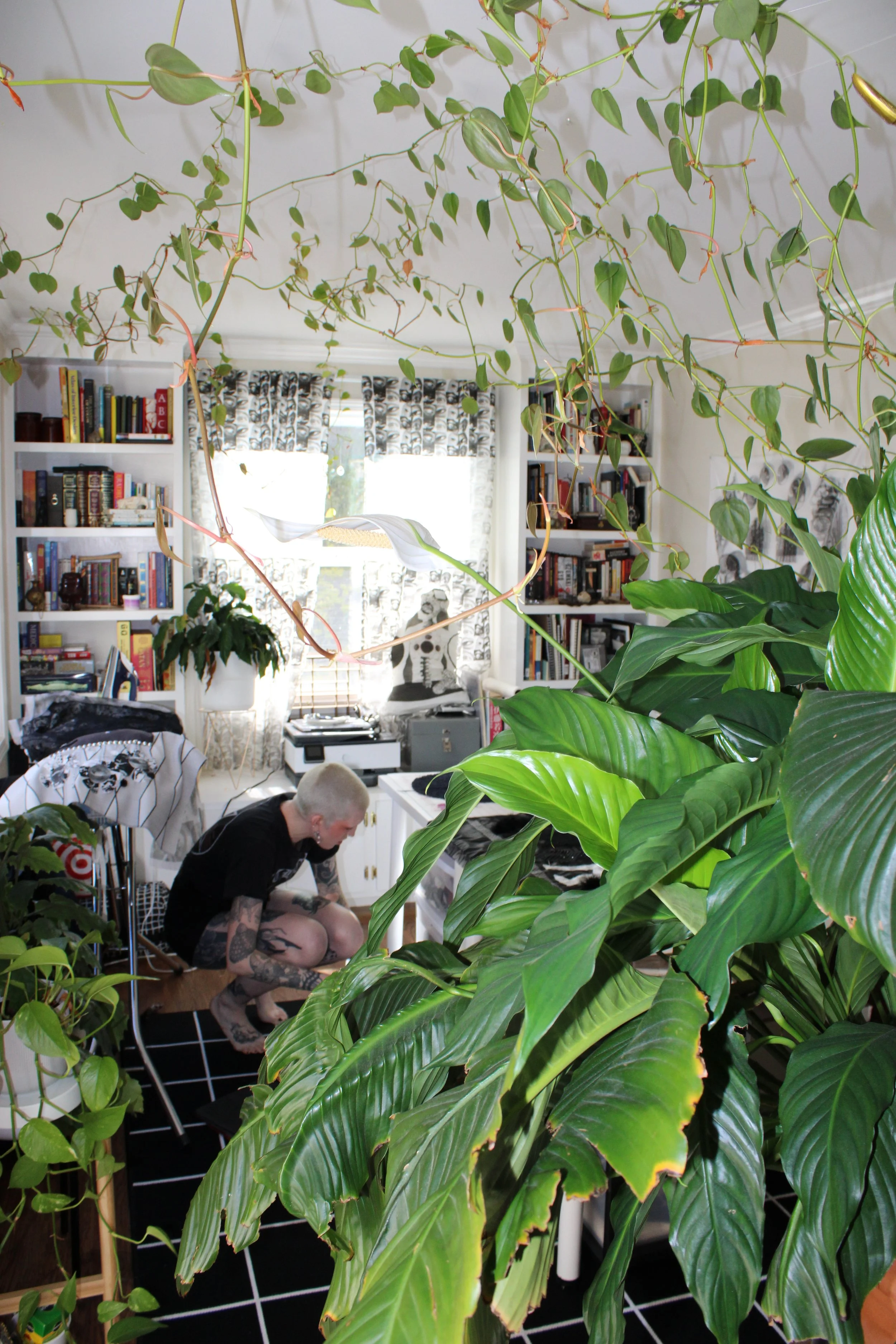Studio Visit & Interview with Vivid Schisms
By John Vochatzer
Shona Crawford (AKA Vivid Schisms, AKA Skeleton Velvet) and I have been following each other on Instagram for about as long as I can remember. Although we had never corresponded, I’ve enjoyed following their practice as an artist and tattooer from afar. Working in the vein of dark surrealism, with a complimentary personal style that is like a walking embodiment of their art, I would even go as far to say they have been one of the more interesting people I’ve kept up on over the years. Living and working in Portland, OR, from 2015 up until the end of 2021, I was naturally very excited to see them announce that they were relocating to San Francisco almost one year ago now exactly as I write this. Because of the tech boom, for years it seemed like virtually no artists or people with any real character or personality were moving here whatsoever. I viewed Shona’s decision to make SF their new home as a sign that perhaps that was starting to change and things were finally starting to look up for San Francisco as a city for artists to move to.
Come to learn, Shona had actually grown up in the Bay Area in San Jose before moving to Arizona with their family where they spent most of their years as a teenager and a young adult. Moving back to the Bay, and to San Francisco in particular, had been a dream of theirs for a long time, and the reality was paved the way for by both a series of guest visits as a tattooer in the past few years and the surge in (relatively) affordable housing spawned by the pandemic. Along with bringing with them a style and approach to tattooing that is not quite so common in this city and I consider to be a refreshing addition, Shona also brings with them a multidisciplinary array of creative outlets including illustration, printmaking, and most recently mixed media/textile collage. The latter of which we are excited to debut in our group exhibition “Bottomless Staircase” opening this Thursday, November 3rd, 2022.
Stylistically, Shona works in a strict monochromatic, black and white palette (except for the one hot pink print I had the pleasure of seeing), favoring line, pattern, and texture as their primary tools of self expression as opposed to color. Likewise, one of the predominant themes in their work is a balance between light and dark, and to the observant viewer one can see the humor, the playfulness, and most importantly the humanity interspersed within their otherwise macabre subject matter. Struggling with depression throughout most of their life— my impressions of Shona are that of a very kind, honest, and compassionate individual, who’s experiences with the darker sides of being human have forged them into a beacon of warmth and light. The Viktor Frankl quote “what is to give light must endure burning” comes to mind when thinking of Shona and their art, as well as the reminder that every long bout of night is proceeded by a sunrise. Thank you Shona—for sharing the work you do with the world, and more specifically, thank you for bringing it here to San Francisco.
Interview
Hey Shona! Thanks for having me over and giving me the tour of your studio. For those who don’t know you, can you tell us a little bit about who you are and the type of art that you do?
My pleasure! I consider myself a mixed media monochromatic artist, primarily working with ink, textile, and paper. I have a proclivity towards the surreal, whimsical, and even macabre, but the subject matter of my work is influenced by the medium and process itself. I am a big consumer of music and am obsessed with my cat.
You grew up in the Bay Area, but moved away when you were in high school, and now you’re back! Can you tell us a little bit about what brought you back after all these years?
Ever since my family picked up and moved to Arizona when I was a teen, I’ve wanted to return. The energy of the bay was always calling me back and I made it a point to visit as often as I could after high school. Eventually I started tattooing and doing guest spots here, which made me think that I could successfully lay down roots here again.
You’re working on a series of textile collages that are going to be part of our exhibit “Bottomless Staircase” here at Moth Belly on November 3rd—What’s the story behind these new works and how did you come to start working with these mediums such as textiles and fabric?
My grandma taught me how to sew when I was little and I always viewed it as fun yet practical skill. I recall making my own stuffed toys as a kid, which I think my mom still has. As I got older and into punk, sewing became an integral part of constructing my wardrobe and those skills I learned when I was younger led to me tailoring my own clothing by adding patches, zippers, etc.
It wasn’t until 2020 that I considered textiles and sewing as a medium for purely visual art. I had access to a large format printer that allowed me to print my collage material and monotypes onto fabric and I started making pillows and garments from these prints (I am a fan of fashion and function). This period of making inspired a desire to create larger works that could be displayed without the need for traditional framing.
In the beginning of 2022 I was at Urban Ore in Berkeley and came across some textiles that really spearheaded my current body of work, most importantly my piece “Shining Brightly Through the Infinite Dark.”
Something you mentioned about your creative process was that the works you create are largely governed by the materials you’re working with, as if the medium itself is there to guide the imagery. Can you elaborate on this a little? And tell us a little bit about your process in your own words.
When I make paper collage, it’s a very surgical and intimate process. I think this can be noted with my frequent use of anatomy as subject matter. With my textile work, I like to go into it with the only limitation being that it is black or white. Pattern and texture are what I encounter in this process and that’s how a piece of feather boa becomes the legs and body of a spider. Sometimes I can be quite literal and color overwhelms me. I like the tactility of fabric, which is inviting to the viewer, but also the delicate nature of sewing fabrics like mesh and silk say “see, but do not touch.”
Aside from working as a collage artist and a printmaker, you are also a tattooer. What has your journey as a tattooer been like? And does your tattoo work inform or relate to your fine art practice at all?
My journey as a tattooer started over a decade ago! I have a great respect for tattooing and always wanted to have a mentor that cared about my potential, but that never really happened, so I spent long periods of time slowly but surely self teaching. I think my work as a tattooer relates to my fine art practice in that it invokes ink and needles, precision, and permanence. Skin and fabric are both gentle yet resilient.
You received an education in printmaking—first attending ASU in Tempe, AZ before going to grad school at PNCA in Portland. What was your experience in the academic art world like? And how did it shape or affect the artist you are now?
I love printmaking! Unfortunately some printmaking processes require a lot of space and equipment which makes it hard to practice at home. Academic institutions provide these facilities and both schools I attended had amazing printmaking programs. I appreciate the opportunities I’ve had to become intimate with specific printmaking processes through these institutions, but some of the art school bullshit gets kind of old! I just want to make the art I want to make at the end of the day, and that’s not necessarily anything that needs to have a whole thesis to support it. It seemed to me that social skills were the most important thing to have in art school and I don’t think I exactly excel in that area.
You and I both share a passion for surrealism, and it was interesting hearing you talk about how you discovered it while studying psychology, prior to enrolling into an arts program. Can you tell us a little bit about your relationship with surrealism?
Surrealism changed my life. I had the opportunity to visit the Tate Modern in London when I was 16 and saw my first Yves Tanguy painting and I’d never seen anything like it before, I was totally moved. Lately I’ve been trying to embrace the more playful energy of Joan Miró, another one of my favorite surrealists. Surrealism inspired me to take up collage and I love the work of Max Ernst and Hannah Höch. I more specifically have an interest in Dada and directed a lot of my studies while in school towards the movement.
Prior to moving to San Francisco almost a year ago, you had been living in Portland since around 2015. From an artist and tattooer perspective, how did you enjoy living in Portland? And how would you compare it to your experience living here in SF so far?
Portland was a great city to tattoo in. i really came into my own personal style there. Portland is also an amazing place for live music and I was definitely spoiled with shows up there. Being vegan is incredibly easy in Portland and I really miss the food. I always wanted to live in SF since I was little, so being here is a dream come true. I haven’t found as many hiking spots as I’d like but the Golden Gate is beautiful. Honestly, there are like five boba tea spots within a few blocks of my house so I can’t complain!
One of the most signature characteristics of your work is the strict monochromatic scale. As you say, you just don’t feel creative with color, and are more drawn to line and texture. How is it that you use line and texture to express yourself?
It’s a surreal moment to mistake one thing for another or experience the uncanny. Using line in an automatic way is also a surreal method of expression and I prefer this practice most in my line etchings. I was doing a lot of copper plate etching in college and felt like it was the perfect medium to express both restraint and the happy accident. I have approached selecting my textiles in a similar way with my current body of work. I don’t necessarily seek out a particular texture but more-so open myself to perusing the fabric outlet and shaping my work around what appealed to me in that moment.
One of the more resounding themes in your work is a balance between light and dark—this is encapsulated not only in the black and white palette you use, but also in your subject matter which can be simultaneously grim and macabre, and also lighthearted and humorous. How would you describe this balance?
I think looking at the world in black and white is a very limiting experience, however something about seeing the light in darkness is very uplifting. I have struggled with depression for most of my life and I have spent long periods of time in a very negative headspace. That’s where it is important to consider the whimsical, which i’ve found to be a really important element in my current body of work.
